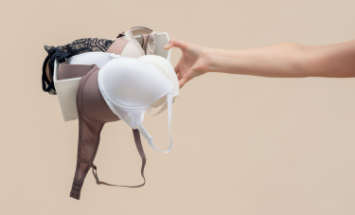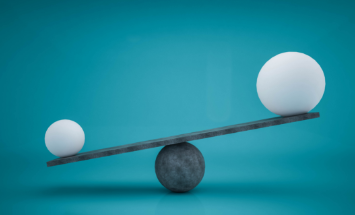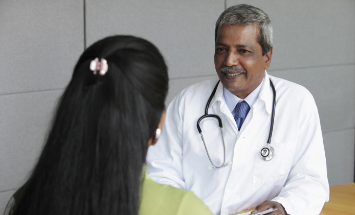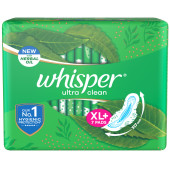Breast Changes through your Menstrual Cycle


Do you ever have days when your breasts seem a little bigger than usual? Or if you're having a bad day with breast tenderness? These alterations could be attributed to your menstrual cycle. Hormones, which are responsible for the growth of breasts, also have an impact on them during your cycle. Breast swelling and breast pain during, after and before your periods might be caused by the changes in your hormones during your menstrual cycle which is very normal.
Breast ducts expand in size when estrogen levels rise early in the cycle and peak shortly before mid-cycle, while progesterone levels peak towards the 21st day (in a 28-day) to stimulate growth of the breast lobules or milk glands. Premenstrual syndrome is typically associated with breast enlargement before menstruation (PMS). Read on below to understand the varied breast changes in different phases of your menstrual cycle.
Phase 1

They’re lumpy! The texture of your breasts may feel uneven and nodular during the first few days of your cycle, when your menstruation begins. Breasts may feel lumpier during menstruation as milk glands swell in preparation for a possible pregnancy. The rough sensation isn't long-lasting, and the breasts will smooth out once your body knows you're not pregnant.
Phase 2

Your breasts are suddenly shrinking at the end of menstruation, depending on the length of your cycle, which is usually around day 3 or 7. Because estrogen and progesterone levels are at their lowest, breasts have the smallest volume during this time, and as you're not being pumped up with hormones, this is the closest depiction of your breasts’ true size. A benefit of them being in a smaller state is that they soften up towards the end of your period.
Phase 3
They're bouncy! Estrogen levels begin to rise as you approach follicular phase ovulation, which occurs around day 12. Because estrogen promotes skin flexibility, this may make the breasts appear perkier. You might want to think of it as a natural lift!
Phase 4

During the luteal phase, which follows ovulation, firmer and larger breasts can be noticed. The breasts are at their densest and largest size as progesterone levels rise. Having comfy bras on hand will be beneficial at this time.
Phase 5

Research has shown that when estrogen is low during the premenstrual week, breasts tend to become slightly uneven. You may find your breasts asymmetrical, but do not fret as this will go back to normal once you start your period.
Apart from the ebb and flow of hormones every month, there are other reasons why you may find changes to your breasts. Some include high intake of carbohydrates that trigger the production of insulin, which can lead to fluid retention in the breasts. Caffeine is another cause of making breasts knotty, that happens due to sensitivity in the breast tissue, which may sometimes become painful.
What is Normal?
Every woman is different, and the effect of the menstrual cycle also differs from one individual to another. Having said this, breast changes during periods are quite common in a majority of women, and you may experience one or more symptoms such as swelling, tenderness, soreness, aching, breast pain before the period and changes in size. There may be times when your breasts are sore or you experience fuller breasts after your cycle. A few methods as mentioned below may help you manage these changes:
- Avoid caffeine
- Consume a diet that is low in fat
- Practice a cardio workout
- Wear a well-fitting bra that provides good support to your breast
When to see a Doctor?

Now that you’re aware of the reasons for breast changes during the menstrual cycle, you can be assured that there is nothing alarming about it. However, you must make an appointment with your doctor if
- There are unusual, new lumps in your breasts or under your arm
- There is nipple discharge (not breast milk), and if it is bloody or brown
- Symptoms are severe making daily activities or sleep a difficult task, despite dietary changes and regular workout
- Your breasts do not get back to their normal size and shape once your period starts
- The nipple becomes more pointed or turns inward
- There is itching, redness or scaling on the breast skin





